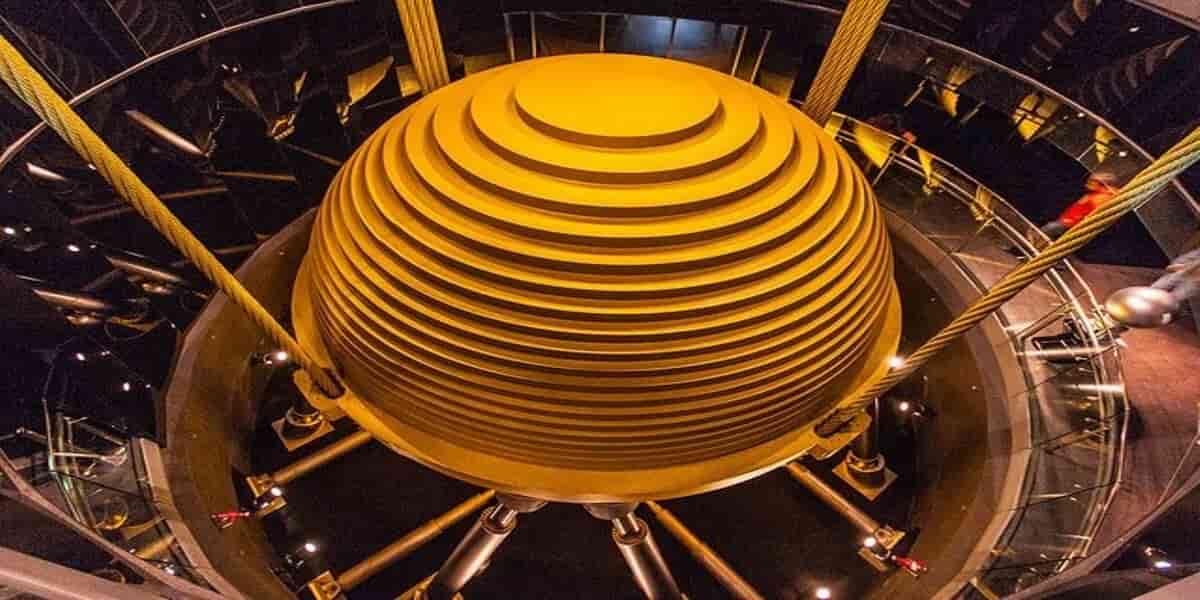Tuned Mass Dumping (TMD)
Doodlebrary
- Introduction to Tuned Mass Dumping (TMD)
- TMD is a vibration control technique used in structural engineering.
- It involves a secondary mass system added to a structure to reduce vibrations.
- Commonly used in buildings, bridges, and other structures prone to dynamic forces.
- How Tuned Mass Dumping Works
- Resonance Principle: The TMD mass is tuned to match the frequency of unwanted vibrations.
- Out-of-Phase Motion: When the structure vibrates, the TMD moves in the opposite direction.
- Energy Absorption: This motion absorbs and dissipates the vibrational energy, reducing oscillations.
- Components of a TMD System
- Mass: A weight calculated based on the structure’s size and vibration characteristics.
- Spring: Provides the restoring force, allowing the mass to move and resonate.
- Damper: Dissipates the energy absorbed by the TMD, preventing excessive movement.
- Benefits of Tuned Mass Dumping
- Reduced Vibrations: Minimizes structural oscillations, improving safety and stability.
- Enhanced Comfort: In buildings, it reduces swaying and motion, making the environment more comfortable.
- Extended Structural Life: Lessens wear and tear caused by repetitive vibrations, increasing longevity.
- Applications of Tuned Mass Dumping
- Skyscrapers: Reduces wind-induced swaying in tall buildings.
- Bridges: Mitigates vibrations caused by traffic, wind, and seismic activity.
- Industrial Structures: Protects equipment and reduces vibration-induced damage in factories.
- Frequency Tuning: The TMD must be precisely tuned to the structure’s natural frequency.
- Mass and Damping Ratio: Determining the right mass and damping ratio is crucial for optimal performance.
- Placement: TMDs are typically installed at locations of maximum structural response, such as the top of buildings.
- Types of Tuned Mass Dumpers
- Pendulum TMD: Uses a swinging mass to counteract vibrations, often used in skyscrapers.
- Linear TMD: Utilizes a spring-mass system, common in various structural applications.
- Nonlinear TMD: Designed for complex vibration patterns, providing broader frequency damping.
- Challenges and Limitations
- Design Complexity: Requires precise calculations and tuning for effective performance.
- Cost: Installation and maintenance can be costly, particularly for large structures.
- Limited Effectiveness: May not be as effective for very low or very high-frequency vibrations.
- Taipei 101: One of the world’s tallest buildings uses a 660-ton TMD to reduce wind-induced motion.
- Millennium Bridge, London: TMDs were installed to control pedestrian-induced vibrations after the bridge’s initial opening caused swaying.
- Tuned Mass Dumping is a proven, effective method for vibration control in various structures.
- Its ability to reduce oscillations improves safety, comfort, and structural longevity.
- As engineering challenges evolve, TMD will continue to play a vital role in modern structural design and maintenance.
